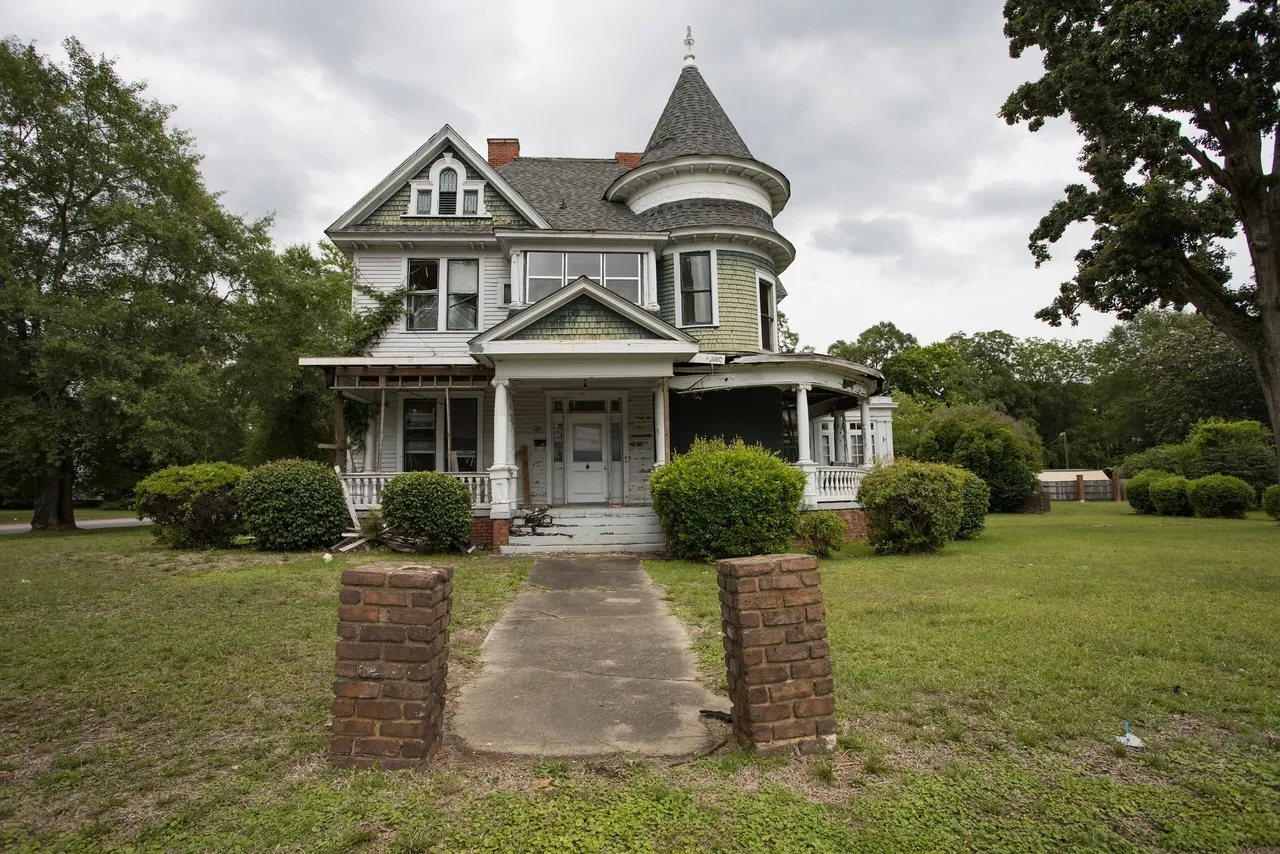After the East Alabama Female College was destroyed by fire in 1870, it ceased operations. The land was subsequently purchased by John Hamilton Drakeford, the son of Thomas Drakeford, a notable merchant in Tuskegee known as the “oldest and most successful merchant in Macon County.” John, in a gesture of affection for his new wife, chose to build an opulent home on the site where the college once stood. Additionally, he gained recognition as the founder and president of the City Bank of Tuskegee.


The construction of the house reached completion in 1892, showcasing a diverse late Victorian-era architectural style. Its features included an asymmetrical front, a prominent gable facing the front, projecting eaves, and a polygonal tower, all characteristic of the late Victorian period. Interestingly, certain elements of the house, such as the main entry transom and sidelights, reflected influences from the earlier Greek Revival style. Over the years, several additions were made to the structure, including a second-story screened-in porch and a ground-floor sunroom. In 1985, the Drakeford House earned recognition as one of the eight historic homes designated for inclusion in the National Register of Historic Places, contributing to the establishment of the North Main Street Historic District and paving the way for subsequent development initiatives.


In 2018, the current out-of-state owner of the Drakeford House reached out to Tuskegee University, seeking input from architecture students on repurposing the aging residence. Despite not having attended the university himself, his family had deep ties to Tuskegee, with his mother, brother, and nephew all being alumni. Faculty members guided the students in devising plans to transform the house into either a bed and breakfast or a wedding venue. As an acknowledgment of their efforts, the owner awarded scholarships to the top three students who presented proposals and pledged financial support for the house’s renovation. The intention was to use it as a practical learning environment for historic preservation and restoration studies. The envisioned two-year project would involve students closely observing and assisting contractors in the renovation process, focusing on tasks like drafting architectural plans and conducting historical research, while refraining from engaging in physical labor due to safety concerns.








Photography By: Leland Kent of Abandoned Southeast

